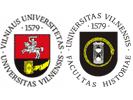After a collapse of the Soviet Union, Lithuania (as well as most of Central and East European countries) is sometimes entitled as "the second echelon", agrarian region or the periphery of Western civilisation. The cultural and economical lag of Lithuania is often said to be caused by a metal gap, which was constructed by a model of collectivism and planned economy. Herewith, slowly changing categories in cognition impact reflections on market economy model and its mode of functioning.
The ideological and physical installation of collectivism and disruption of private sector during Sovietism contradicted the centenary traditions of private farming in Lithuania. With the recovery of independence, speedy land economy, property and social reforms in the village met the expressions of collectivism practice and shadow private farming tradition that were implanted during Sovietism. This evoked the feeling of uncertainty and social strain in the village, and often results in a form of mass protest of farmers.
The purpose of this study is to determine the status of property relations in the rural community during Sovietism by using a private sector concept. The research comprises of three chapters:
1. Soviet economic and social policy in Lithuanian village.
2. Property relations in Lithuanian Soviet village.
3. The relationship between differentiation of rural society and property sectors in Sovietism.
During Sovietism private sector was being eliminated from the market contrary to state sector, because it was treated as a rudiment of commercial activities and therefore contradicted the society model that was constructed by the official Communist ideology. Legally, a person was enabled to possess private property only for uncommercial purposes. All personal and real estates as well as their output were controlled by the state. The Soviet power structures were unsuccessful in totally eliminating private sector and practically, private sector, producing surplus production for commercial purposes, remained a half legal, informal and shadow structure in village. For the rural society it was one of the main sources of incomes, resources for which were rendered from the state sector. | 

 dizainas ir programavimas giriaus
dizainas ir programavimas giriaus  dizainas ir programavimas giriaus
dizainas ir programavimas giriaus